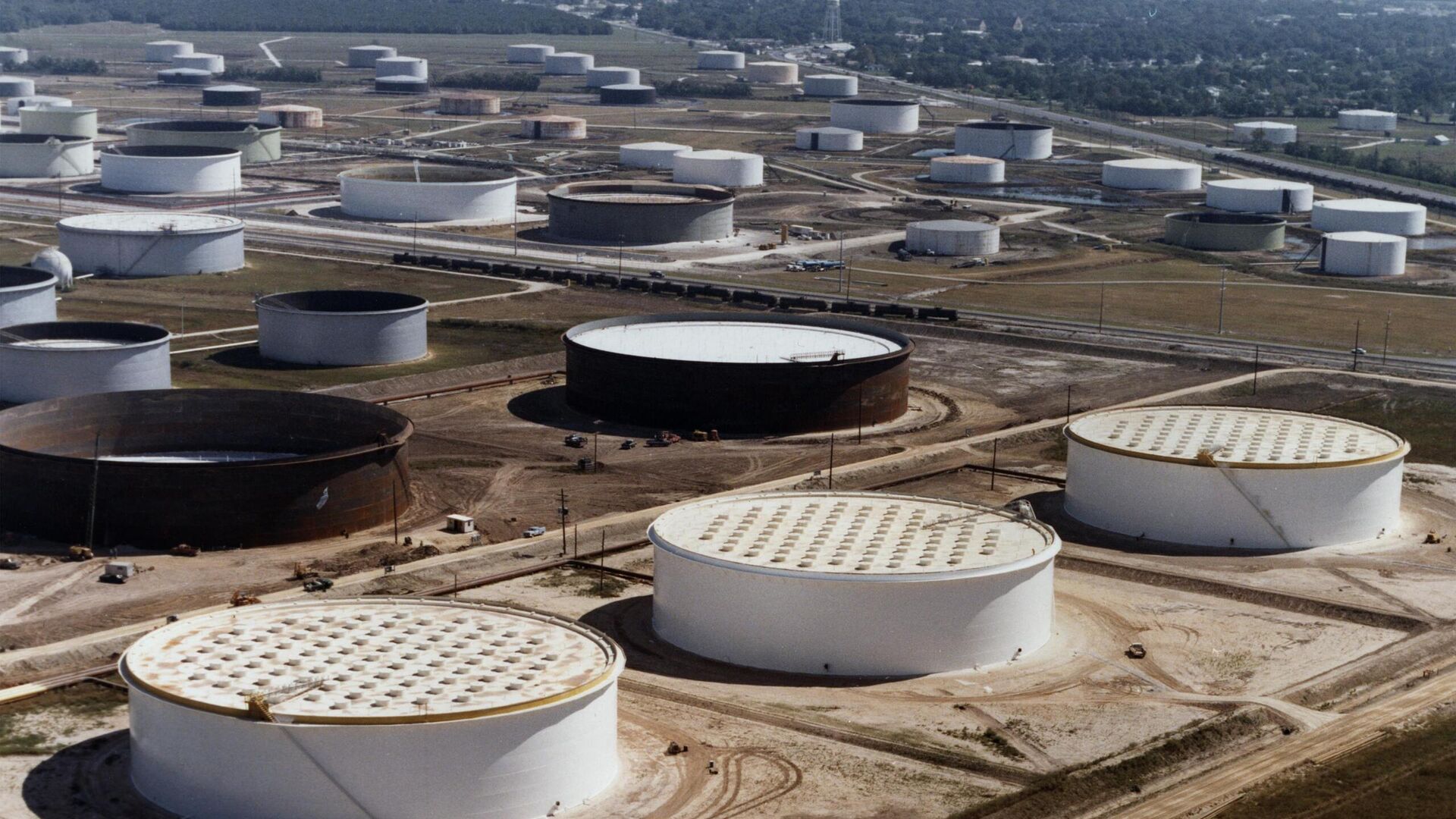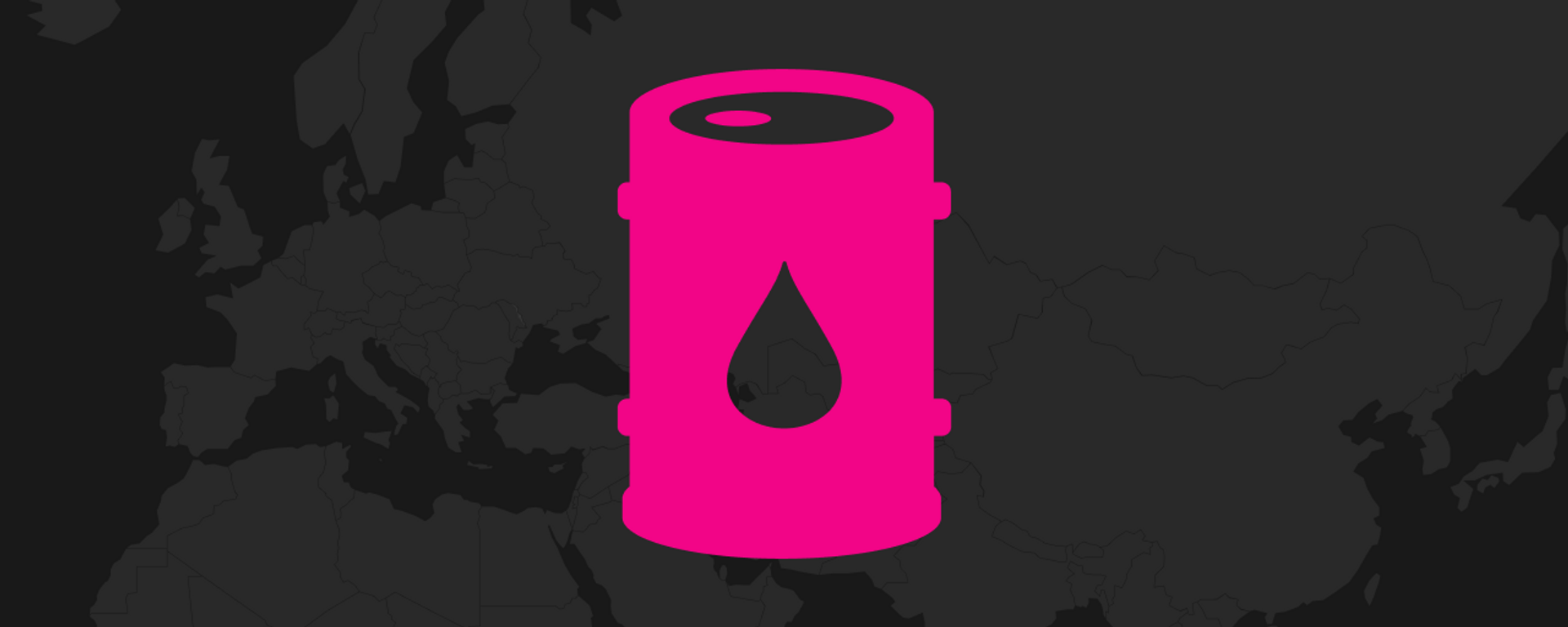https://sputnikglobe.com/20230521/us-to-refill-strategic-petroleum-reserve-to-remedy-bidens-massive-sell-off-1110502103.html
US to Refill Strategic Petroleum Reserve to Remedy Biden's Massive Sell-Off
US to Refill Strategic Petroleum Reserve to Remedy Biden's Massive Sell-Off
Sputnik International
US Department of Energy (DOE) has confirmed that it will purchase up to 3 million barrels of oil for its Strategic Petroleum Reserve (SPR).
2023-05-21T13:28+0000
2023-05-21T13:28+0000
2023-05-21T13:28+0000
americas
us
strategic petroleum reserve (spr)
oil
https://cdn1.img.sputnikglobe.com/img/07e6/03/1f/1094365039_0:0:2560:1441_1920x0_80_0_0_9934dd6454a7bc5ca60f04a72090eec6.jpg
Despite the fact that oil prices rebounded after the US Department of Energy (DOE) confirmed that it will purchase up to three million barrels of oil for its Strategic Petroleum Reserve (SPR), it is difficult to predict the long-term prospects of such a move, Finam analysts stated.There have been reports circulating that the US government was planning to top up its depleted emergency oil stockpile, and once the Biden administration made the announcement on May 15, Brent oil futures rose 0.6% to $75.66 a barrel. West Texas Intermediate crude futures also shot up to $71.50 a barrel on Tuesday. According to Finam FG analyst Alexander Potavin, the declared volume of deliveries is, however, too small to seriously affect the dynamics of oil quotations.West's Price Ceiling CavesWestern sanctions against Russia, and the oil price cap levied by the US-led West were conceived in the hopes of depriving Moscow of proceeds to fuel its special military operation in Ukraine. However, these assumptions were completely false. Russia’s deliveries have not fallen very much. Indeed, according to the International Energy Agency (IEA), Russia remains one of the top countries in the OPEC+ framework, with daily crude output holding at 9.6 million barrels in April, second only to Saudi Arabia. In April, oil production in Iran reached a four-year high, with most of the supplies en route to China. Sanction-riddled Venezuela is also increasing production. Thus, the pressure on prices is exerted primarily by growing supply. Hoping to break this pattern by pumping several million barrels into reserves is futile, the Finam analyst added.However, there may be a positive signal for the oil market in the fact that the United States will no longer sell from its strategic reserves. In other words, one factor that has been putting pressure on the oil market for a whole year will be taken out of the equation. The rest will depend on the ability of the global economy to digest additional oil, as well as the willingness of OPEC+ players to keep production low. There remains one unknown - the prospects for demand, analysts added.Restocking After SPR Sell-OffEarlier in the week, it was announced that the US Energy Department was planning to restock one of the four major oil storage facilities of the SPR along the Gulf Coast - Big Hill. But after spiking gas prices prompted US President Joe Biden to drain the SPR, the three million barrels announced now are viewed by analysts as a mere drop in the ocean.The SPR - four underground storage facilities in Louisiana and Texas - was created in 1975 to counter oil price volatility of the kind that during the oil crisis of the 1970s nearly crippled the American economy. The SPR contained around 638 million barrels of oil when Biden took office in January 2021, according to the US Energy Information Administration. Now, it is down to its lowest level since October 1983 - 362 million barrels.According to the US Energy Department, the coming purchase was prompted by an effort to capitalize on the fact that today’s prices have fallen, currently trading around $71 a barrel, after initially spiking to well above $100 a barrel in 2022. Prices nosedived amid better-than-anticipated supply, fears of a recession, and US Federal Reserve interest rate hikes, US analysts are cited as saying.Numerous reports in 2022 suggested that after Biden announced a massive release of the country's strategic petroleum reserve into the market in the wake of the steeply rising price of gasoline, a move to refill the reserve could be taken once crude oil prices dipped below $80 a barrel.As for OPEC+, it cut oil production by 9.7 million barrels per day in May 2020 due to a decrease in oil demand caused by the COVID-19 pandemic measures. In August 2022, the organization started the final stage of canceling the cuts, but in November it cut production once again by two million barrels per day from the maximum possible level of August. This decision is valid until the end of 2023, aimed at ensuring the stability of the global oil market.
https://sputnikglobe.com/20230517/wests-price-ceiling-caves-in-russian-oil-exports-hit-post-february-2022-high-1110419698.html
https://sputnikglobe.com/20220913/why-bidens-draining-of-strategic-petroleum-reserves-is-grave-mistake-1100737615.html
https://sputnikglobe.com/20220924/trumps-strategy-helped-shield-us-from-energy-collapse-amid-bidens-spr-sell-off-analysis-suggests-1101178603.html
americas
Sputnik International
feedback@sputniknews.com
+74956456601
MIA „Rossiya Segodnya“
2023
News
en_EN
Sputnik International
feedback@sputniknews.com
+74956456601
MIA „Rossiya Segodnya“
Sputnik International
feedback@sputniknews.com
+74956456601
MIA „Rossiya Segodnya“
us department of energy, strategic petroleum reserve, spr, spr sell-off, draining of strategic oil reserves, 3 million barrels of oil, oil price cap on russia, us-led west, russia's daily crude output, opec+ cuts,
us department of energy, strategic petroleum reserve, spr, spr sell-off, draining of strategic oil reserves, 3 million barrels of oil, oil price cap on russia, us-led west, russia's daily crude output, opec+ cuts,
US to Refill Strategic Petroleum Reserve to Remedy Biden's Massive Sell-Off
Much of the US Strategic Petroleum Reserve was drained over the last year by the Biden administration in an attempt to compensate for its boycott of Russian energy resources. The sanctions had the ironic consequence of triggering record-high inflation in the US while giving Russia extra income via its sales to other countries.
Despite the fact that oil prices rebounded after the US Department of Energy (DOE) confirmed that it will purchase up to three million barrels of oil for its
Strategic Petroleum Reserve (SPR), it is difficult to predict the long-term prospects of such a move, Finam analysts stated.
There have been
reports circulating that the US government was planning to top up its depleted emergency oil stockpile, and once the Biden administration
made the announcement on May 15, Brent oil futures rose 0.6% to $75.66 a barrel. West Texas Intermediate crude futures also shot up to $71.50 a barrel on Tuesday. According to Finam FG analyst Alexander Potavin, the declared volume of deliveries is, however, too small to seriously affect the dynamics of oil quotations.
“Only purchases in volumes comparable to last year's vast amounts of oil released from the SPR can help boost oil prices this year,” he told Russian media.
West's Price Ceiling Caves
Western sanctions against Russia, and the
oil price cap levied by the US-led West were conceived in the hopes of depriving Moscow of proceeds to fuel its special military operation in Ukraine. However, these assumptions were completely false. Russia’s deliveries have not fallen very much. Indeed, according to the International Energy Agency (IEA), Russia remains one of the top countries in the OPEC+ framework, with daily crude output holding at 9.6 million barrels in April, second only to Saudi Arabia. In April, oil production in Iran reached a four-year high, with most of the supplies en route to China. Sanction-riddled Venezuela is also increasing production. Thus, the pressure on prices is exerted primarily by growing supply. Hoping to break this pattern by pumping several million barrels into reserves is futile, the Finam analyst added.
However, there may be a positive signal for the oil market in the fact that the United States will no longer sell from its strategic reserves. In other words, one factor that has been putting pressure on the oil market for a whole year will be taken out of the equation. The rest will depend on the ability of the global economy to digest additional oil, as well as the willingness of OPEC+ players to keep production low. There remains one unknown - the prospects for demand, analysts added.

13 September 2022, 17:30 GMT
Restocking After SPR Sell-Off
Earlier in the week, it was announced that the US Energy Department was planning to restock one of the four major oil storage facilities of the SPR along the Gulf Coast - Big Hill. But after spiking gas prices prompted US President Joe Biden to drain the SPR, the three million barrels announced now are viewed by analysts as a mere drop in the ocean.
The SPR - four underground storage facilities in Louisiana and Texas - was created in 1975 to counter oil price volatility of the kind that during the oil crisis of the 1970s nearly crippled the American economy. The SPR contained around 638 million barrels of oil when Biden took office in January 2021, according to the US Energy Information Administration. Now, it is down to
its lowest level since October 1983 - 362 million barrels.
According to the US Energy Department, the coming purchase was prompted by an effort to capitalize on the fact that today’s prices have fallen, currently trading around $71 a barrel, after initially spiking to well above $100 a barrel in 2022. Prices nosedived amid better-than-anticipated supply, fears of a recession, and US Federal Reserve interest rate hikes, US analysts are cited as saying.
Numerous reports in 2022 suggested that after Biden announced a massive release of the country's strategic petroleum reserve into the market in the wake of the steeply rising price of gasoline, a move to refill the reserve could be taken once crude oil prices dipped below $80 a barrel.
As for OPEC+, it
cut oil production by 9.7 million barrels per day in May 2020 due to a decrease in oil demand caused by the COVID-19 pandemic measures. In August 2022, the organization started the final stage of canceling the cuts, but in November it cut production once again by two million barrels per day from the maximum possible level of August. This decision is valid until the end of 2023, aimed at ensuring the stability of the global oil market.

24 September 2022, 14:37 GMT





